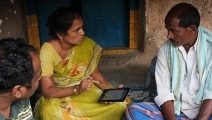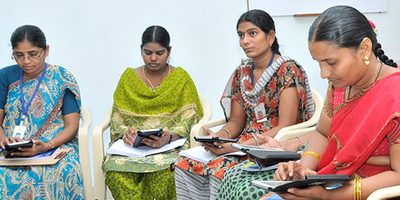
Re-engineer the healthcare work-force for effective management of cardio-vascular and other non-communicable diseases
Shifting basic jobs normally done by doctors to less-qualified health workers has worked successfully in low and middle income countries including India to manage conditions such as heart disease, diabetes and depression, researchers from The George Institute for Global Health have found.
The study, a review of 22 trials that was published today in the medical journal PLOS, found the concept was a potentially effective and affordable strategy for improving access to healthcare for patients with non-communicable diseases.
The paper included six studies from India and one each from Pakistan and Sri Lanka and covered a wide range of health conditions including task shifting for management of hypertension, diabetes and cardiovascular diseases, for mental health and for the screening of cancer.
Study author Dr Rohina Joshi, senior research fellow at The George Institute for Global Health and The University of Sydney, said: "This model has been studied for the management of HIV-AIDS in Africa and has great potential for healthcare delivery for other chronic diseases in large parts of the world including in India."
The number of physicians per 1000 population is just 0.6 in India and therefore different models of care are imperative. "We've seen that it’s hard to attract doctors to work in rural and remote areas, where some of our most disadvantaged citizens live. Extending the role of healthcare workers is not about replacing doctors – it's about freeing up the doctors to attend to difficult clinical conditions. Healthcare workers could fill the care vacuum in certain specialized areas, such as providing lifestyle advice and screening for risk factors like blood pressure and smoking," she said.
"A trial conducted in the Gadchiroli district of Maharashtra showed that when health care workers could successfully prescribe and administer antibiotics for neonatal infections, sepsis-related deaths in new-born babies dropped dramatically from 16.6 per cent to 2.8 per cent." In another intervention, non-physician health care workers screened individuals for common mental disorders and gave six sessions of therapy. Patients were referred to the general practitioner or a psychiatrist if required. Screening for oral cancer, and breast lumps were the other interventions by non-physician health care workers from India that were included in the study.
The results of the cluster–randomised control trial by The George Institute for Global Health India done in 44 villages located in the Godavari districts of Andhra Pradesh, India, also showed how task sharing can lead to effective management of cardiovascular disease. In that study, non-physician healthcare workers were trained in the use of a simple algorithm designed to screen and manage individuals with cardiovascular disease. These individuals were referred to physicians for initiation of treatment and NPHWs provided follow-up care.
"The health workforce shortage in rural regions can be tackled by launching a CVD prevention strategy that could be delivered by non-physician healthcare workers (NPHWs)," said Dr Joshi. "Modern technology, such as apps carrying algorithms to enable non-communicable disease risk factors, have made task shifting an even more attractive and do-able model."
"Shifting some jobs to less-qualified staff, however, was not the only answer to controlling non-communicable diseases in low to middle income countries", said Dr Joshi. "The health workforce has to be substantially re-engineered. Health workers have to be trained in new skills such as disease-specific screening and management skills."
Community health workers would also have to be provided with a range of basic equipment such as weighing scales, sphygmomanometers to measure blood pressure, glucometers to measure blood glucose and detect potential diabetes, and adequate drugs.
"Given the lack of physicians in low and middle-income countries, especially in rural and remote areas, policy makers should consider developing standardised protocols and training programmes for community health workers in order to maintain safety and effectiveness of health care delivery," Dr Joshi said. "Consultation should take place with medical and nursing councils, and the model should be developed as part of a system closely integrated with clinicians."




